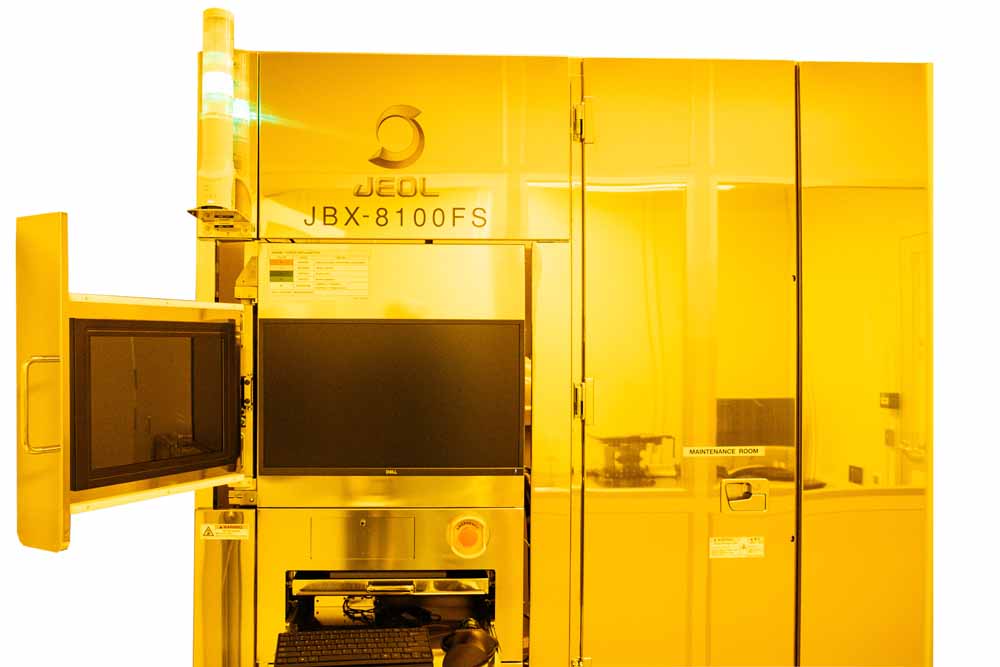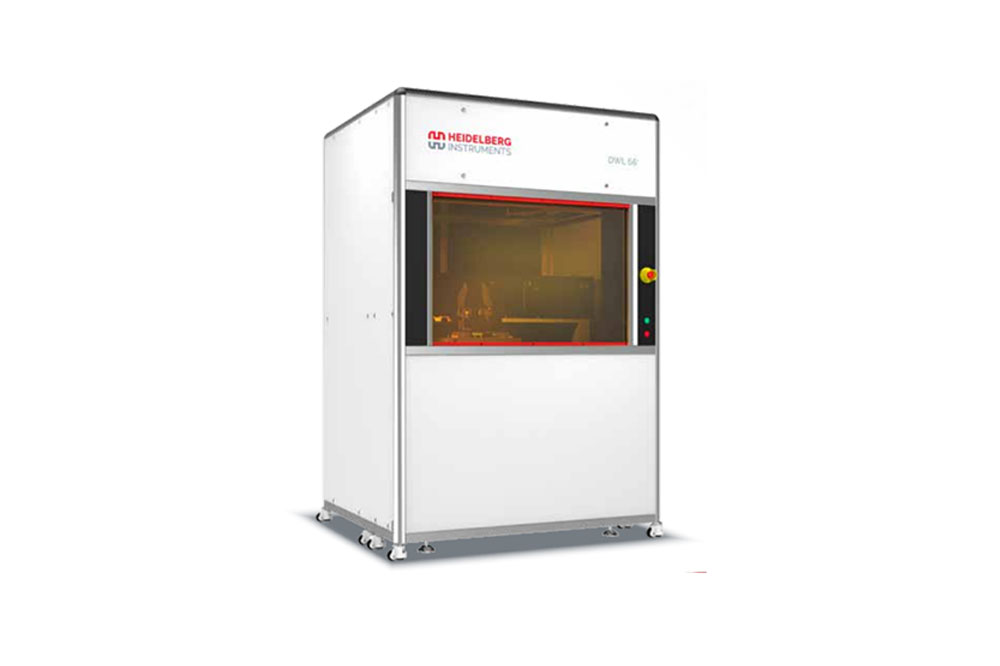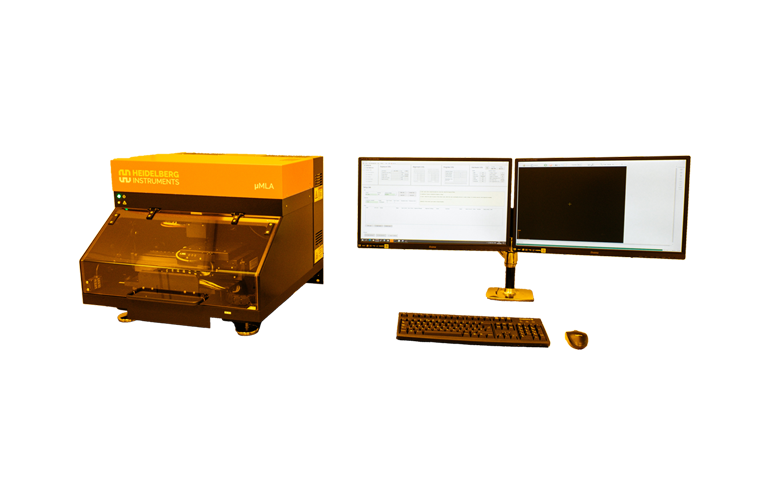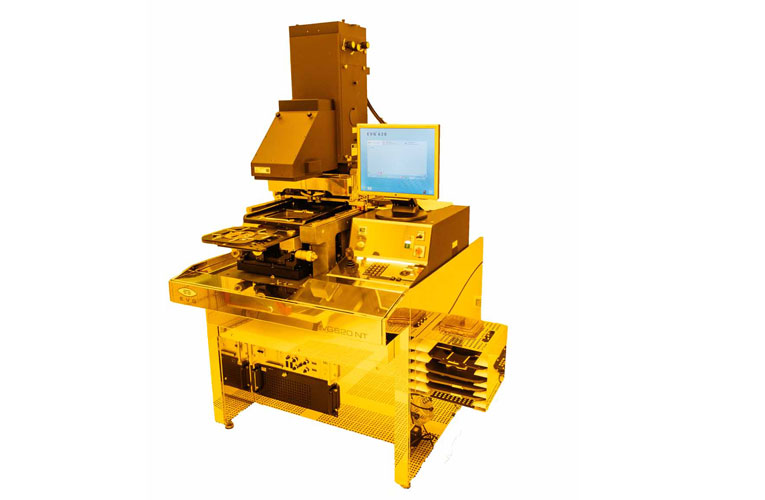Photolithography
We offer standard and custom-made protocols to support from 10nm to 500 micron expose
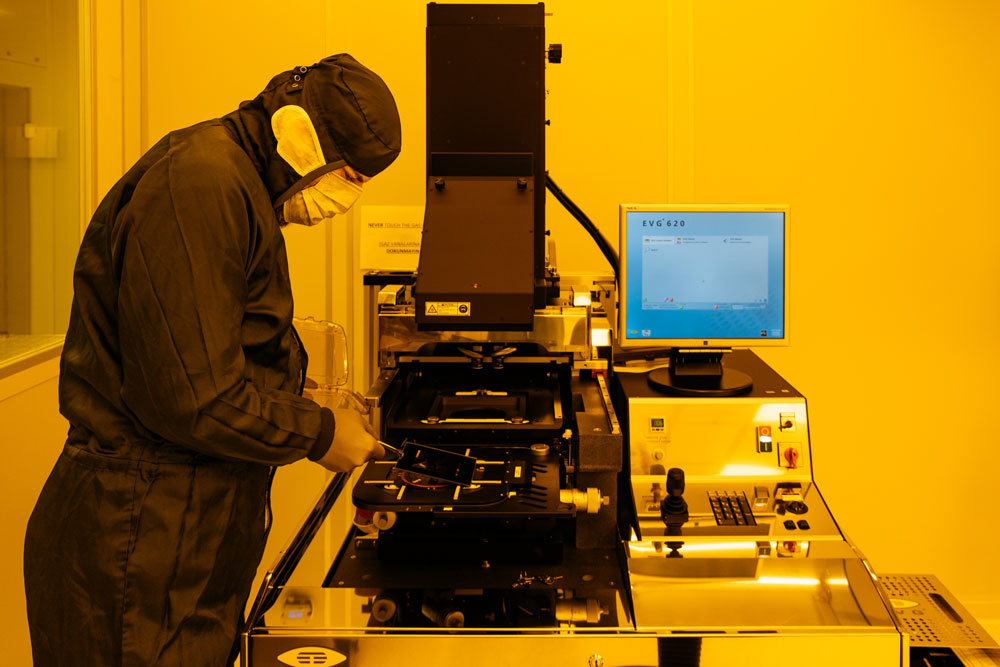
Photolithography is a sequence of process steps that allows for the replication or creation of a pattern on a substrate before performing any additive (lift-off) or substractive (etching) steps. This is achieved by using a photosensitive polymer called photoresist, which reacts to blue-UV (350nm – 440nm) or DUV (248nm) light by becoming soluble. The photoresist is typically diluted with a solvent and dispensed on the substrate, which is then spin-coated to achieve the desired thickness. The photoresist is then baked to remove any residual solvent content.
There are several different methods for patterning the photoresist:
- Using a mask that locally blocks the UV light with a thin layer of chromium, allowing the mask pattern to be replicated (mask-aligner) or projected (stepper) onto the substrate
- Using a focused UV laser spot to write the pattern directly on the substrate (direct laser writing)
- Using interferences to create periodic intensity patterns (interference lithography








